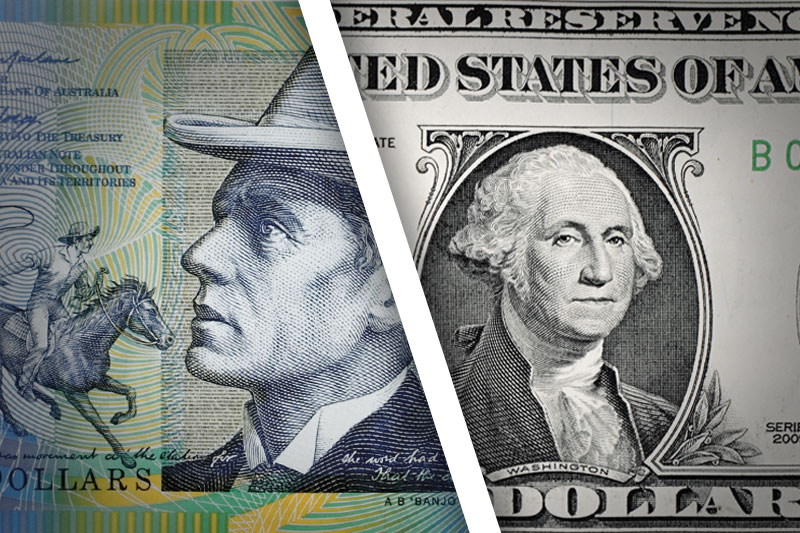Investing.com - The Aussie dollar traded slightly slightly lower against its U.S. rival during Thursday’s Asian following Australian employment data.
In Asian trading Thursday, AUD/USD traded slightly lower, losing 0.08% to 1.0312. The pair was likely to find support at 1.0288, the low of November 16 and resistance at 1.0400, the Wednesday high.
Earlier today, Australia’s statistics bureau said the number of employed Australians rose by 10,400 in January following a December decrease of 3,800. The December number was revised for the better. Analysts expected the January reading to show an increase of 6,000.
Full-time jobs fell by 9,800 while part-time jobs jumped by 20,200. The employment data arrived a day after official data showed that retail sales in Australia fell 0.2% in December, disappointing expectations for a 0.3% rise, after a 0.2% decline the previous month.
Australia now has an unemployment rate of 5.4%, though analysts had expected an increase to 5.5%. The country’s jobless rate is vastly superior to what is seen in other developed market economies such as the U.S., which has an unemployment rate of 7.9%.
Earlier this week, the Reserve Bank of Australia left the overnight cash rate at 3%, but just over half of traders surveyed believe the central bank will pare rates again when it meets in early March. Some see the employment data as perhaps being the impetus for RBA to trim rates again. RBA has lowered rates by 175 basis points since late 2011.
Benign inflation down under potentially gives RBA room to lower rates again. Still, the Aussie has shown signs of starting to wilt against the greenback. Trading just over 1.03 represents the lowest levels in three months and the Aussie traded as low as 1.0298 earlier today.
Elsewhere, EUR/AUD inched higher by 0.03% to 1.3108 while AUD/JPY slid 0.31% to 96.36. AUD/NZD rose 0.29% to 1.2330.
In Asian trading Thursday, AUD/USD traded slightly lower, losing 0.08% to 1.0312. The pair was likely to find support at 1.0288, the low of November 16 and resistance at 1.0400, the Wednesday high.
Earlier today, Australia’s statistics bureau said the number of employed Australians rose by 10,400 in January following a December decrease of 3,800. The December number was revised for the better. Analysts expected the January reading to show an increase of 6,000.
Full-time jobs fell by 9,800 while part-time jobs jumped by 20,200. The employment data arrived a day after official data showed that retail sales in Australia fell 0.2% in December, disappointing expectations for a 0.3% rise, after a 0.2% decline the previous month.
Australia now has an unemployment rate of 5.4%, though analysts had expected an increase to 5.5%. The country’s jobless rate is vastly superior to what is seen in other developed market economies such as the U.S., which has an unemployment rate of 7.9%.
Earlier this week, the Reserve Bank of Australia left the overnight cash rate at 3%, but just over half of traders surveyed believe the central bank will pare rates again when it meets in early March. Some see the employment data as perhaps being the impetus for RBA to trim rates again. RBA has lowered rates by 175 basis points since late 2011.
Benign inflation down under potentially gives RBA room to lower rates again. Still, the Aussie has shown signs of starting to wilt against the greenback. Trading just over 1.03 represents the lowest levels in three months and the Aussie traded as low as 1.0298 earlier today.
Elsewhere, EUR/AUD inched higher by 0.03% to 1.3108 while AUD/JPY slid 0.31% to 96.36. AUD/NZD rose 0.29% to 1.2330.
